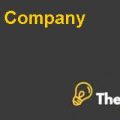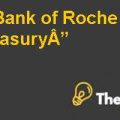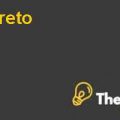
RATIO ANALYSIS
In exhibit 5, a comprehensive ratio analysis has been made in order to analyze the company’s financial performance as well as financial practices of the company. The ratio analysis also represents the financial trends of the company as well as it also assist the top management of the company in order to identify the possible weaknesses of the company with respect to its financial performance
LIQUIDITY RATIOS
The current ratio and quick ratio of the company will increase in the financial year 2014 as compared to financial year 2013. This shows that the company would be able to maintain its current assets efficiently and effectively, as well as, it also depicts that the company’s current assets will increase in 2014 as compared to the current assets of the financial year 2013.
This further represents the probable increase in company’s ability to pay off its current liabilities by utilizing its current assets. This will be beneficial in the interest of the company as the company would be able to pay off its current liabilities readily. Furthermore, the interest cover ratio of the company shows that the company’s ability to pay off its interest rate would increase substantially. Moreover, it also depicts that the interest expense of the company would decrease in the financial year 2014 as compared to the interest expense of the financial year 2014, as well as, it shows an increase in the net profits of the company in the financial year 2014.
FINANCING RATIOS
The financing ratios of the company depict the trend and financing practices of the company. The financing ratios depicts that the company will be focusing more towards equity financing as compared to debt financing. This would attract the potential investors towards the company as well as it also minimizes the liquidity risks of the company.
EFFICIENCY RATIOS
The efficiency ratios of the company include the return on assets ratio, Return on capital ratio, and return on equity ratio of the company. The efficiency ratios of the company will increase in the financial year 2014 as compared to the financial year 2013. This depicts the efficiency of the management with respect to optimal usage of the company’s assets as well as equity of the company in order to generate maximum output. This acts as a backbone for the company in attracting the potential investors in the market. It also enables the company to enhance its customer base and secure a leading position in the entire market.
PROFITABILITY RATIOS
The profitability ratios of the company involves considering and analyzing the gross profit margin as well as operating margin of the company. The profitability ratios of the company show that the company would effectively maintain its gross profit ratio in the financial year 2014 as compared to financial year 2013. Moreover, the operating ratio of the company would be increased which shows that the company would be able to control its operating costs more efficiently and effectively as compared to the financial year 2013.
TURNOVER RATIOS
The company’s overall turnover ratios would be increased in the financial year 2014. This shows that the company would be able to allocate its resources more efficiently and effectively. This will subsequently increase the sales volume and selling potential of the company. The increase in overall turnover ratios is beneficial in the interest of the company as it provides an opportunity to the company to dominate a significant portion of market share by attracting more investors towards the company.Abc Company Case Solution
DECISION REGARDING PROCUREMENT OF EQUIPMENT
The calculation has been done in Exhibit 6 with respect to the feasibility of the projects. The net present values of all the three projects have been calculated which shows that the net present value of the second project is highest among the two other projects. This shows that the company would benefit more if the company invests in the second project..................
This is just a sample partial case solution. Please place the order on the website to order your own originally done case solution.













